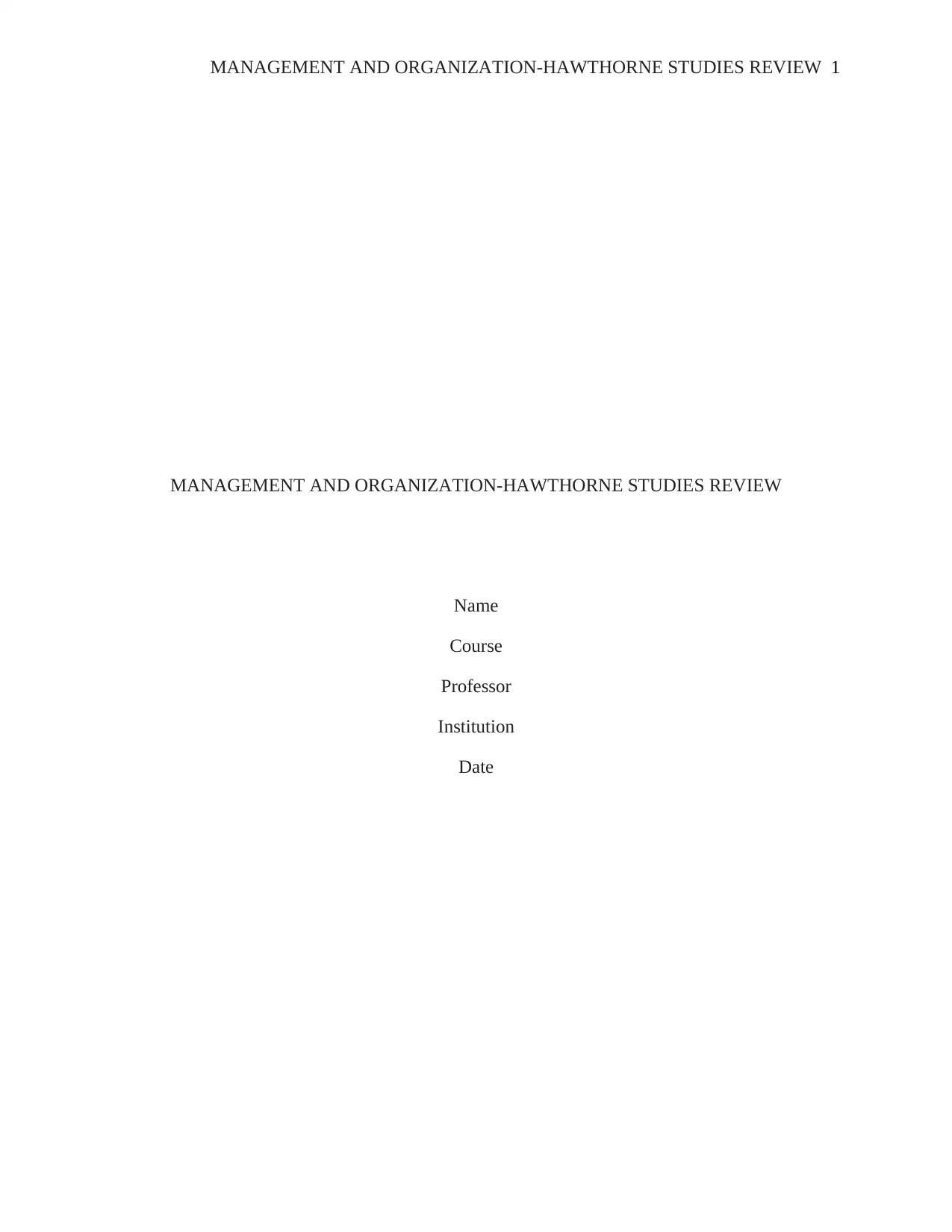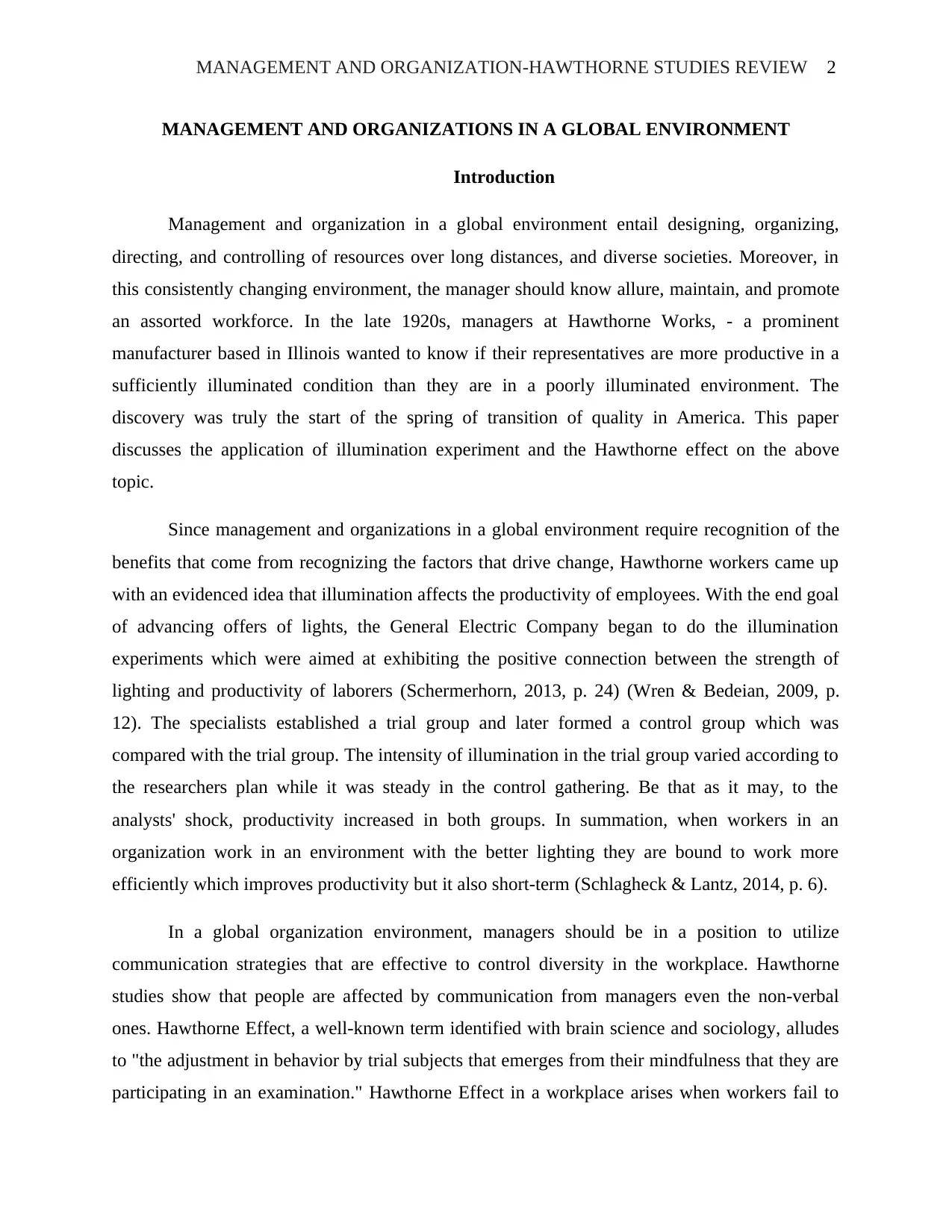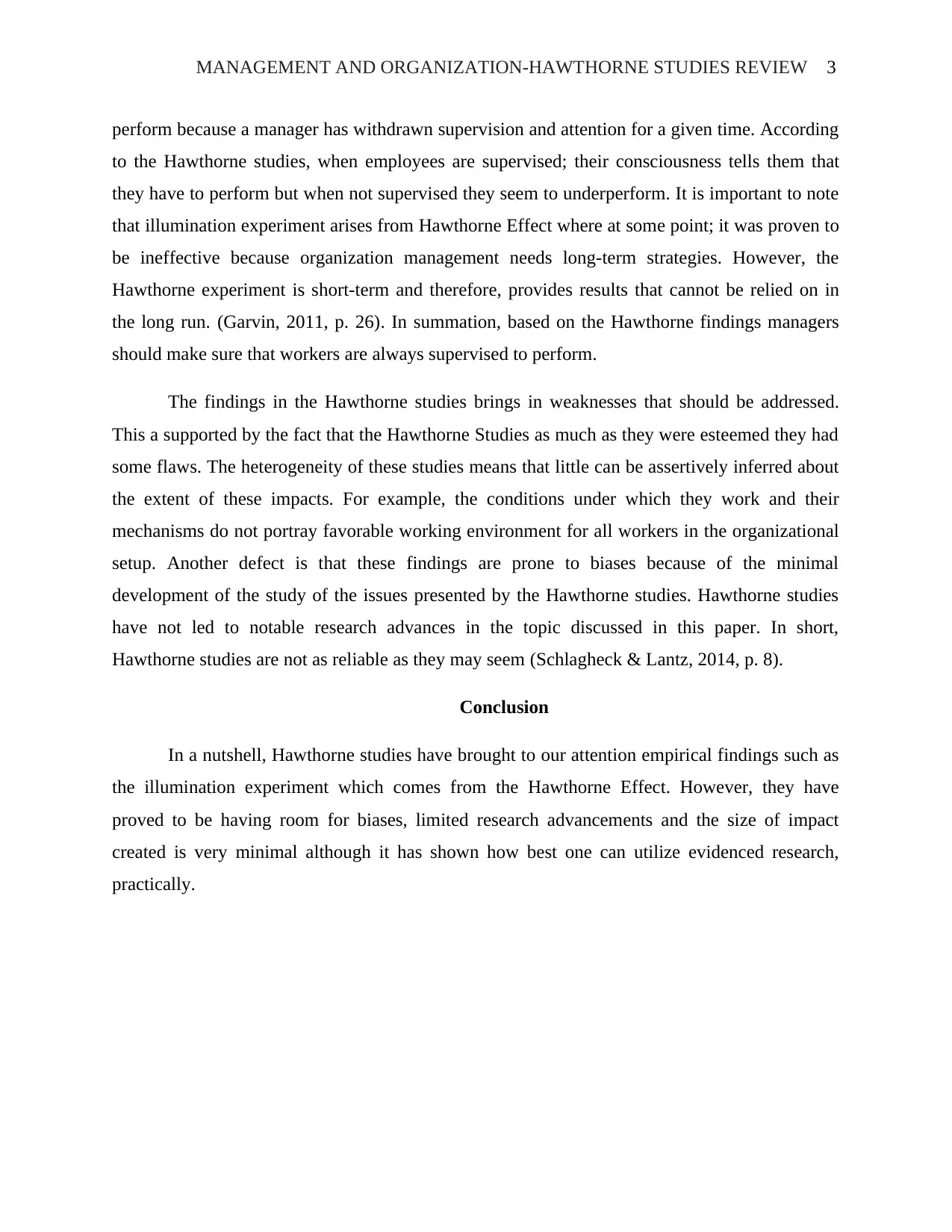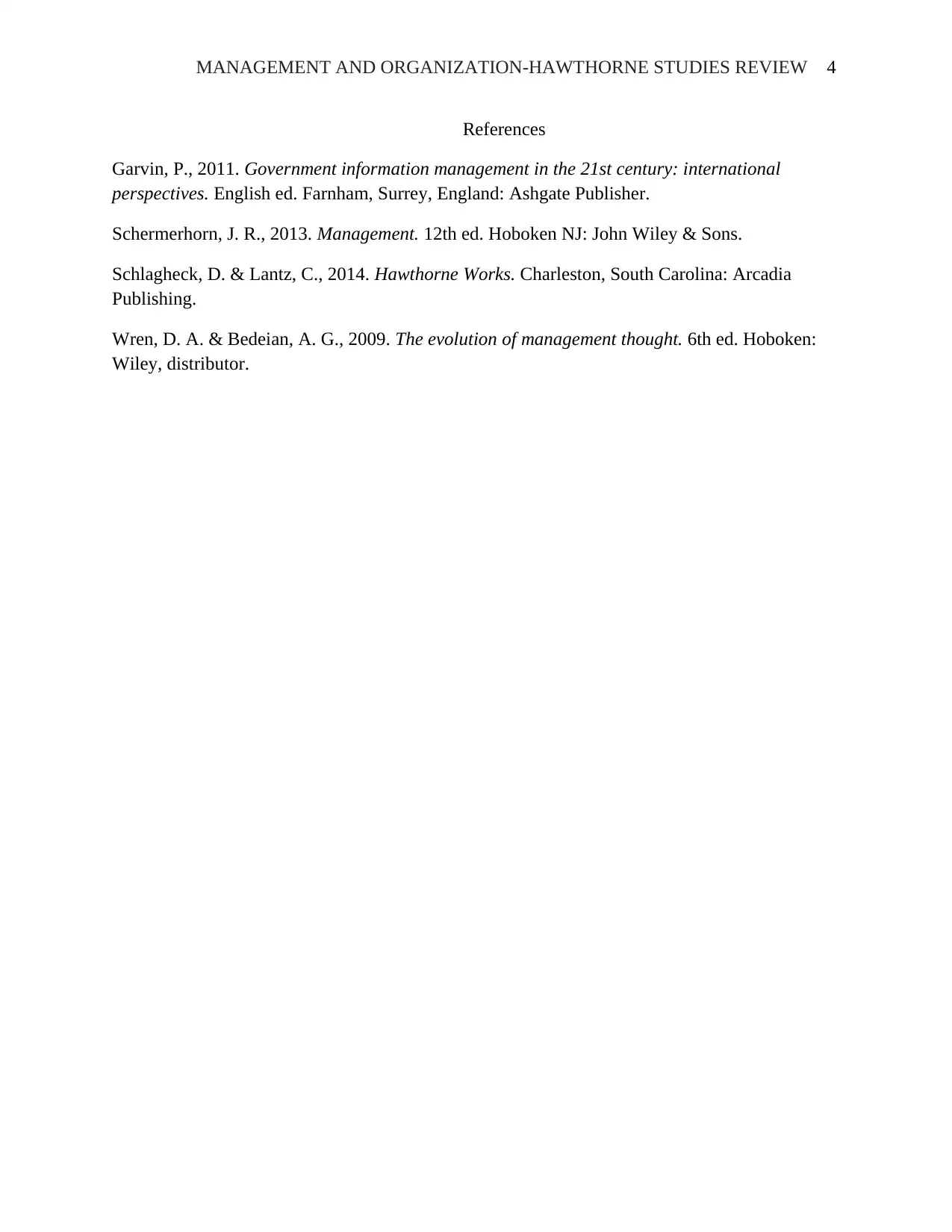Management and Organization: Hawthorne Studies Review and Evaluation
VerifiedAdded on 2020/03/23
|4
|873
|29
Essay
AI Summary
This essay provides a comprehensive review of the Hawthorne Studies, a pivotal set of investigations conducted in the late 1920s. It delves into the illumination experiment, a key component of the studies, which aimed to determine the impact of lighting on worker productivity. The essay highlights the unexpected findings, where both the experimental and control groups experienced increased productivity, leading to the identification of the Hawthorne effect—the phenomenon where individuals alter their behavior due to the awareness of being observed. Furthermore, the paper discusses the implications of these findings for management and organizational behavior in a global environment, emphasizing the importance of communication, supervision, and the potential limitations of the studies, such as their susceptibility to biases and the need for long-term strategies. The essay concludes by summarizing the studies' contributions and acknowledging their limitations.
1 out of 4











![[object Object]](/_next/static/media/star-bottom.7253800d.svg)